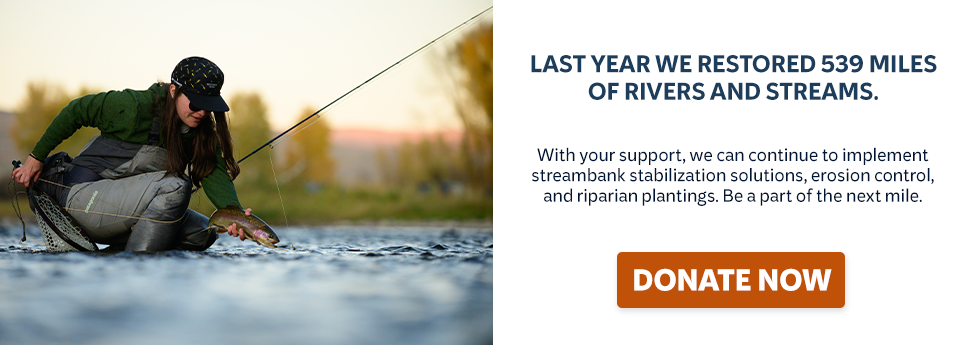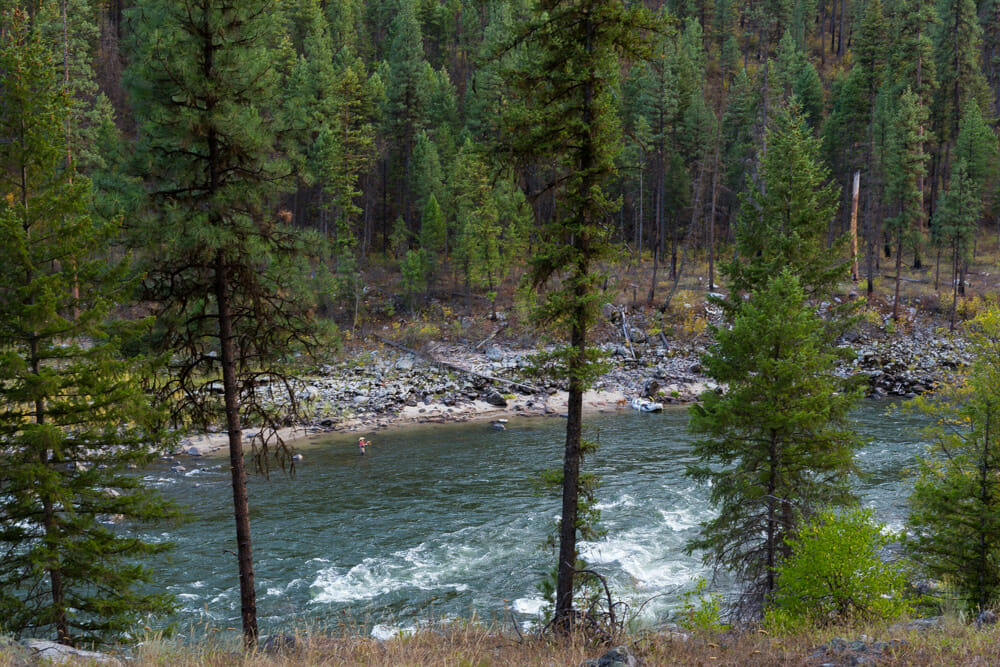By Chris Wood
The first time you snorkel a stream, the size of the bugs are disarming. Stoneflies tumbling down the stream look like aquatic dragons bent on taking off a limb. It is an optical illusion, of course.
We were way up in the South Fork of the Salmon Riv
er drainage. Hiking in neoprene wet suits in relatively warm weather is never a good idea. It is a downright bad idea when you are gaining several thousand feet in elevation.
I eased into the cold water, and lifted my head and yelled in fake fright to a Forest Service colleague when I saw the first stoneflies drifting down the stream. I eased around some dead-fall, and around a bend, and gasped. There they were. Two steelhead, tails fanning, beat-up, side-by-side.
And not just any steelhead but likely part of the fabled Idaho “B-run” steelhead that spawn primarily in the Salmon and Clearwater rivers. The B-run steelhead are Idaho’s largest, and with good reason, some climb more than 6,000 feet in elevation and traverse more than 800 miles to their natal mountain streams to spawn.
I thought about those two fish when I learned that Idaho had decided to close the steelhead fishing season in Idaho for the year (which typically starts in September and continues into May the next year). Threats of litigation, the Endangered Species Act, and bureaucratic wrangling are part of the official explanation, but the real problem is that there just aren’t enough wild steelhead making it back to Idaho.
The decline of Snake River wild steelhead has been dramatic. In the early 1960s, over 100,000 wild steelhead returned to the Snake River. This year, by Nov. 15, when the vast majority of wild steelhead have already returned, only 11,719 wild steelhead had passed Lower Granite Dam. And fewer than 2,000 of those wild fish are the large B-run steelhead so highly prized by anglers.

Even compared to recent years the 2018 run of wild steelhead is abysmal. The 10-year average wild steelhead return exceeds 39,000.
Lower Granite is the last of the eight federal hydropower dams that span the Columbia and Snake Rivers. It is the last impediment to the several thousand miles of habitat – much of it five-star quality—that awaits salmon and steelhead in the Snake River Basin if they can get past the dams, and too few do.
While the eight dams that Snake River wild steelhead must pass to reach their spawning grounds are not the only cause of their decline, that gauntlet takes a heavy toll. The last four dams that the fish must pass on the lower Snake River are particularly problematic. Though there is work to be done to reduce losses of Snake River wild steelhead to predators and harvesters downstream in the Columbia, as well as the need to reform hatcheries, overwhelming scientific evidence supports either removal of the four lower Snake River dams or some other way to improve survival as the most effective way to recover Snake River salmon and steelhead to healthy, fishable levels.

The state of Idaho has spent millions of dollars restoring wild steelhead and salmon habitat in the Snake River Basin. Similarly, Idaho farmers have reduced their irrigation withdrawals from the Snake to help young salmon and steelhead with their downstream migration through the predator-filled, slackwater reservoirs that sit behind each of the four Lower Snake dams. Cold water is released from Dworshak dam on the Clearwater to help cool the lethally hot water in the lower Snake River reservoirs during the summer months when adult wild steelhead and salmon return.
These measures, while certainly helpful, have not stopped the decline of Idaho’s wild steelhead and salmon.
Idahoans are incredibly proud of their wild salmon and steelhead. For 40 years they have been willing to shoulder sacrifices to ensure their return to their natal mountain streams. At some point, however, they will begin to question the benefit of the billions of taxpayer dollars that have been spent on wild steelhead and salmon without a clear path to recovery.
Let’s hope they do so soon. Time is running out for Idaho’s wild salmon and steelhead.
Chris Wood is the president and CEO of Trout Unlimited.



